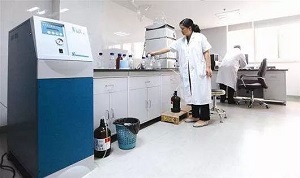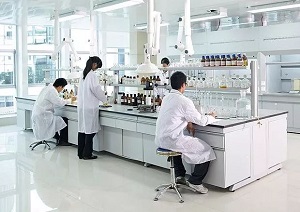Liquid chromatography is a very good instrument for most people to get started. Still, even after several years of use, experienced analysts are accustomed to some improper operations (master taught wrong?), often leading to some instrument failure.
A convenient and fast analysis process is important, but to do more samples and ignore some essential steps, is often more than worth the loss, which operations can not do. Which operations can’t be done? What about the small probability of failure that the master did not teach? What are the four key factors to note in the liquid phase? This article tells you one by one!
Mobile phase without filtration
Because dust or any other impurity particles can wear out the plunger, seal ring, cylinder, and check valve, any solid particles in the mobile phase should be removed in advance. The mobile phase is best distilled in a glass vessel, while the common method is filtration, which can be done with a filter such as a Millipore membrane (0.2μm or 0.45μm). The pump inlets should all be connected to sand filter rods (or tablets). The filters of infusion pumps should be cleaned or replaced frequently.
Pump was not cleaned in time after use
The mobile phase should not contain corrosive substances, and the mobile phase containing buffer solution should not be kept in the pump, especially if the pump is stopped overnight or longer. Suppose the mobile phase containing buffer solution is left in the pump due to evaporation or leakage or even just due to the resting of the solution. In that case, it may precipitate microscopic crystals of salt, which will be the same as the solid particles mentioned above, to damage the seal ring, plunger, etc. Therefore, the pump must be pumped with pure water to clean it sufficiently and then replaced with a solvent suitable for column preservation and conducive to pump maintenance (for reversed-phase bonded silica stationary phase, it can be methanol or methanol-water).
Mobile phase going short
When the pump is working, be careful to prevent the mobile phase in the solvent bottle from being used up. Otherwise, the empty pump operation will wear the plunger, cylinder, or seal ring, eventually producing leakage.
What if there is no mobile phase flow and no pressure indication?
Maybe a large amount of gas in the pump, then you can open the pressure relief valve so that the pump in a larger flow rate (such as 5ml / min) to run the bubble exhaust, but also available a 50ml syringe at the pump outlet to help pump out the gas. Another possible reason is that the seal ring is worn and needs to be replaced.
Unstable pressure and flow?
The reason may be that bubbles need to be excluded, or a foreign body within the one-way valve can remove the one-way valve immersed in acetone within the ultrasonic cleaning. Sometimes there may be bubbles within the sand filter rod or partially blocked by the microscopic grains of salt or nuisance microorganisms. In this case, the sand filter rod can be removed and immersed in the mobile phase sonication in addition to bubbles, or the sand filter rod can be immersed in dilute acid (such as 4 mol / L nitric acid) within the rapid removal of microorganisms, or dissolve the salt, and then immediately cleaned.
Why is the pressure too high or too low?
It could be that the line is clogged and needs to be cleared and cleaned. If the pressure drops, there may be a leak in the line. Checking for clogs or leaks should be done section by section.
When gradient elution is performed, the mixing of multiple solvents and the constant changes in composition pose some special problems that must be given due attention.
PS: Gradient elution is used in liquid chromatography for samples with complex components. In the same analysis cycle, the concentration ratio of the mobile phase is continuously changed according to a certain procedure called a gradient elution. Thus, the components of a complex sample with widely different properties can be well separated according to their appropriate capacity factor k.
Advantages of gradient elution:
- Shorten the analysis cycle.
- Improve the separation capacity.
- Improve the peak shape, rarely trailing.
- Increase the sensitivity.
However, it sometimes causes baseline drift.
Improper selection of mobile phase for gradient elution
Pay attention to the mutual solubility of the solvents. Not miscible solvents can not be used as the mobile phase of the gradient elution. Some solvents are miscible within a certain ratio but not miscible beyond the range, so it is necessary to pay more attention when using them. When organic solvents and buffers are mixed, salt crystals may also be precipitated, especially when using phosphates need to be particularly careful.
Neglected blank gradient elution
The purity of the solvent used in the gradient elution is required to ensure good reproducibility. A blank gradient elution must be performed before performing sample analysis to identify solvent impurity peaks because impurities in weak solvents are enriched in the column head and then eluted off by strong solvents. The solvent used for the gradient elution needs to be thoroughly degassed to prevent bubbles from forming when mixing.
Neglected viscosity change due to solvent mixing
The viscosity of the solvent mixture often varies with the composition, and thus pressure changes often occur during gradient elution. For example, the viscosity of methanol and water are both small. When mixed in a similar ratio, the viscosity increases a lot, and the column pressure at this time is about twice as high as when methanol or water is in the mobile phase. Therefore, care should be taken to prevent the pressure during gradient elution from exceeding the maximum pressure that the infusion pump or column can withstand.
Proper use and maintenance of six-way valves
①The sample solution must be filtered with a 0.45μm filter membrane before feeding to reduce the wear of particles on the inlet valve.
②Turn the valve spool not too slow, let alone stay in the middle position, otherwise the mobile phase will be blocked, and the pressure in the pump will increase dramatically, even exceeding the maximum pressure of the pump; then turn to the injection position, the excessive pressure will damage the column head.
③ To prevent buffer salt and sample residue in the injection valve, the valve should be flushed after each analysis. Usually, it can be flushed with water or a solvent that can dissolve the sample and then flushed with water.
HPLC column use and maintenance
The proper use and maintenance of chromatographic columns are very important, and the slightest carelessness can reduce the column’s efficiency, shorten its service life or even damage it. The following issues must be paid attention to during chromatographic operation to maintain the column.
Adjusting the flow rate too fast
Avoid sharp changes in pressure and temperature and any mechanical shocks. Sudden changes in temperature or dropping the column from a height can affect the filling condition inside the column; sudden increases or decreases in column pressure can also influence the packing inside the column, so the flow rate should be adjusted slowly, and the valve should not be rotated too slowly during the valve feed (as described earlier).
Backflush HPLC Columns
Generally speaking, the column cannot be backflushed. Still, only when the manufacturer indicates that the column can be backflushed can it be backflushed to remove impurities left in the column header. Otherwise, recoil will rapidly reduce the efficiency of the column.
Pre-column and guard column
Select a suitable mobile phase (especially pH) to avoid destruction of the stationary phase. Sometimes a pre-column can be attached in front of the injector, and when the analytical column is bonded silica, the pre-column is silica, which allows the mobile phase to be “saturated” with silica before entering the analytical column, avoiding the dissolution of the silica matrix in the analytical column.
To avoid injecting complex matrix samples, especially biological samples, directly into the hplc column, it is necessary to pre-treat the sample or connect a protective column between the injector and the guard column. The guard column is usually a short column filled with a similar stationary phase. Guard columns can and should be replaced frequently.
How to troubleshoot small probabilities?
【1】 Pump pressure jumping, jumping range of about 10 bar.
Solution:
1, the original small white head is a little dirty after the replacement has not been solved.
2, the active valve on the spool was removed, and it was found that a similar bubble exists. Immersed in methanol-water solution sonication 5min to remove the bubble, re-install it and then observe. Still needs to be solved.
3, replace the new spool, which will be installed. There is no longer jumping. Observe a period after a relatively smooth, successfully solved.
【2】Failure occurred.
①plug homing overpressure
② perfusion and set the flow rate are no pressure and no liquid outflow
③ detector light gate can not be reset
④ into the large concentration of samples, into the corresponding blank position also out of the peak.
Possible causes:
① HPLC inline filter is blocked
② pump head under the one-way valve blocked
③ may be the detection cell is dirty, there may be a little blocked optical path, and then may not be lamp life to
④ small rag is dirty. Need to change
Solution
① remove the HPLC Inline filter, set the beaker, and add purified water boiling for 5-10 minutes after the methanol super. If still blocked, a general can take a dilute nitric acid bubble that can not be replaced by a new one, which is a consumable
② remove the pump head under the one-way valve. Both may be blocked. Remove the vertical in the ear when shaking a sound is not heard. Take the ear wash ball to blow the one-way valve on the line (note the direction). Blowing with no response can take the solvent ultrasound, but not boiled, generally super to shake in the ear can hear the sound does not affect the experiment
③ first, use the solvent to test the pool rushing, with what to try specific samples depending; if the rushing still can not, the detection pool removed, look at the light energy, if the energy can still (a few thousand), may have to clean the optical path. For the first cleaning, it is recommended to call the engineer because the parts to be cleaned in the bottom of the detector have a black piece, a slit in the middle, and that piece of the screws is octagonal. It is very troublesome to unload.
④ Take out the five sample trays, and you can see a black protrusion inside (you can not see with a flashlight). Usually, the sample needle is from that place to absorb the sample. Hands can be removed by reaching in, and there is a small white circle (with more natural black) and a new one on the line, but the instrument generally comes with 10.
There are four main key factors to keep in mind during the use of liquid chromatography.
The liquid chromatograph itself
The instrument generally will not have problems, and especially the new ones just bought back. The most important thing for the instrument itself is the calibration of the instrument, just bought back the instrument is generally by the seller first to do the system confirmation of the instrument (including IQ, PQ, OQ), to confirm the successful passage, and then ask the national or provincial instrument calibration bureau to calibrate, after passing the test can be used with confidence, in addition, some good companies will do a half-yearly internal calibration of the instrument, the purpose is To ensure the normal operation of the instrument.
Chromatographic conditions
Chromatographic conditions generally include the mobile phase, hplc column, detection wavelength, flow rate, and injection volume. The mobile phase involves the water and reagent solution to prepare the mobile phase. The water generally requires ultra-pure water or other water with a resistivity of not more than 18.2 megohm level. The reagent solution requires the chromatographic level to prevent the impurities in the water and reagent solution from interfering with the chromatographic results.
HPLC columns will have different requirements depending on the species, but each HPLC column has its cleaning requirements, which can be found in the column manual. It must be carried out according to the above requirements. Otherwise, it will cause a decline in column efficiency and shorten the column’s life, and the detection wavelength will also have different requirements depending on the species. Here it should be noted observe the changes in the energy of the detector deuterium lamp, such as large fluctuations in the baseline, the response value of the active ingredient suddenly becoming smaller, etc., may be caused by the lack of energy of the deuterium lamp, deuterium lamp is generally recommended to use 800 hours, but the actual use of more than time can be replaced according to the actual situation.
Flow rate also varies depending on the species, generally 1.0ml/min. The flow rate is not arbitrarily changed, especially as QC personnel, but as R & D personnel, sometimes to explore the conditions or method durability verification, will change the flow rate to evaluate the method’s applicability. For the injection volume, due to different species also having different provisions, the injection volume of this piece now uses automatic injection, so the injection precision is very good. We can emphasize what.
Operators
First, as a liquid phase operator, one must carefully study the liquid phase manually, master the operation of the liquid phase hardware and software, master the daily maintenance, and master the most basic troubleshooting and repair.
The operator also drafts the general operating procedures of the liquid phase, so as long as the operation is carried out in strict accordance with the operating requirements, no problems will generally arise. Of course, Jelly needs to point out that the daily maintenance of the liquid phase is very important, such as the filtration of the mobile phase, degassing, cleaning of the pump gasket, cleaning of the system pipeline, cleaning of the inlet solvent filter, etc. If not adhered to, it can easily lead to unnecessary failures such as column blockage, excessive system pressure, abnormal chromatographic peaks, and waste of time.
Secondly, the operator should be done by the same person alone when preparing sample solutions for liquid phase analysis to avoid accidental errors.
Liquid phase installation environment
The liquid chromatograph should be installed as far as possible horizontally, away from vibration and electromagnetic interference in the house of the table. If possible, try to separate the liquid phase data processing system. One is to prevent the large chromatographic baseline noise, baseline instability, etc., and one is to reduce harm to human beings.
Post time: Dec-10-2022









